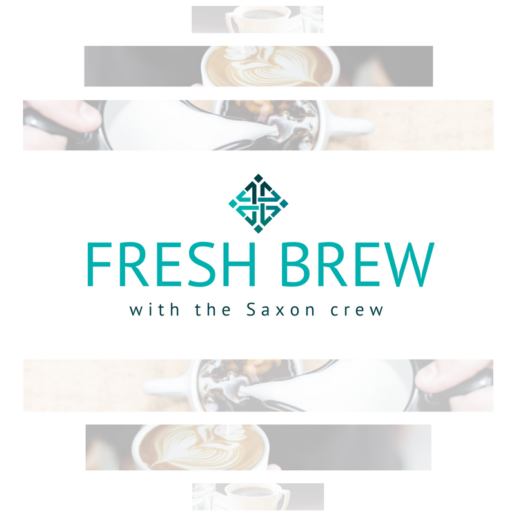The Saxon Advisor - May 2020
Compliance Check
what you need to know
Eligible Automatic Contribution Arrangement (EACA). For failed ADP/ACP tests, corrective distributions must be made towards participants within 6 months after the plan year ends – June 30, 2020.
SF HSCO Expenditures. The last day to submit SF HSCO expenditures, if applicable*, for Q2 is July 30, 2020. *Applicable for employers with 20+ employees doing business in SF and Non-Profits with 50+ employees.
Form 5500 and Form 5558. The deadline for the 2019 plan year’s Form 5500 and Form 5558 is July 31, 2020 (unless otherwise extended by Form 5558 or automatically with an extended corporate income tax return).
Form 8955-SSA. Unless extended by Form 5558, Form 8955-SSA and the terminated vested participant statements for the plan year of 2019 are due July 31, 2020.
Form 5558. Unless there is an automatic extension due to corporate income tax returns, a single Form 5558 and 8955-SSA is due by 2½ months for the 2019 plan year.
Form 5330. For failed ADP/ACP tests regarding excise tax, Form 5330 must be filed by July 31, 2020.
401(k) Plans. For ADP/ACP testing, the recommended Interim is due August 1, 2020.
In this Issue
- Upcoming Compliance Deadlines:
- Eligible Automatic Contribution Arrangement (EACA)
- The deadline for the 2019 plan year’s Form 5500 and Form 5558 is July 31, 2020.
- Providing an HSA, FSA, or HRA Health Plan for your Employees
- Fresh Brew Featuring Lexi Kofron
- This month’s Saxon U: How To Legally Work With Gig And Contract Workers
- #CommunityStrong: Families Forward Donation Drive
How To Legally Work With Gig And Contract Workers
Join us for this interactive and educational Saxon U seminar with Pandy Pridemore, The Human Resources USA, LLC, as we discuss how to legally work with Gig and Contract Workers.
Providing an HSA, FSA, or HRA Health Plan for your Employees
Bringing the knowledge of our in-house advisors right to you...
When open enrollment hits annually, it is not uncommon for employers to feel exasperated when staring down a list of acronyms such as HSA, FSA and HRA. As it should go without saying, the most common first thought is, “What does any of this mean?” Even the most seasoned experts have difficulty with understanding the complexities of various care options.
““It is your account; yours if you leave the employer and can contribute as long as you have an HDHP and can use the funds until they are gone, even if you are no longer in an HDHP.” said Kelley Bell, a Group Health Benefits Consultant at Saxon Financial.
Fresh Brew Featuring Lexi Kofron
"Stay calm and collected on phone calls, and stay organized!"
This month’s Fresh Brew features Lexi Kofron, a Client Service Specialist at Saxon.
Lexi’s favorite brew is a Cinnamon Dolce Latte. Her favorite local spot to grab his favorite brew is at Starbucks
Scott’s favorite snack to enjoy is Pretzels and Hummus.
This Month's #CommunityStrong:
Families Forward Donation Drive
This May the Saxon family donated a bunch of household items and outdoor activities to Families Forward. Their staff goes out each week in masks and gloves to hand out these donations to the families in need through their program. Here are some pictures they provided when they passed out the donations and our trunk load of donations!
Are you prepared for retirement?
Saxon creates strategies that are built around you and your vision for the future. The key is to take the first step of reaching out to a professional and then let us guide you along the path to a confident future.
Monthly compliance alerts, educational articles and events
- courtesy of Saxon Financial Advisors.

Fresh Brew With Lexi Kofron
Welcome to our brand new segment, Fresh Brew, where we will be exploring the delicious coffees, teas, and snacks of some of our employees! You can look forward to our Fresh Brew blog post on the first Friday of every month.
“Stay calm and collected on phone calls, and stay organized!”
Lexi is a Client Service Specialist at Saxon Financial Services.
Lexi has been at Saxon since 2015 when she worked here as an assistant while completing her high school education. Lexi left Saxon to pursue her education full time and after graduating from Ohio Connections Academy, and has proudly returned to Saxon as a Client Services Specialist and is responsible for assisting clients.


Cinnamon Dolce Latte
Lexi’s favorite fresh brew is Cinnamon Dolce Latte from Starbucks!

Pretzels and Hummus
Lexi’s favorite snack is Pretzels and Hummus!
AI helps applicants hone their soft skills
Due to the coronavirus causing many job losses, many are searching for a new place of employment. In competing markets, job candidates may now have to tune their skills and artificial intelligence can help. Read this blog post to learn more.
As millions of workers look for new positions due to the coronavirus pandemic, artificial intelligence can help job candidates fine-tune their interview skills and stand out from the crowd.
HR tech and recruiting company, CareerArc, launched a new interview assessment tool that uses artificial intelligence to highlight candidates’ soft skills, like organization and creativity. The feature, released this week as part of CareerArc Outplacement, helps job seekers learn how to market those traits on their resumes and LinkedIn profiles — which makes it easier for employers to identify the best candidates for open positions, CareerArc executives say.
“The most important thing job seekers can do right now is to use this time to make themselves more marketable, and our coaches are on standby seven days a week to help do just that,” says Yair Riemer, president of career transition services at CareerArc. “With this new assessment, our career coaches can better counsel job seekers to emphasize their unique strengths, while building the confidence they need to find their next opportunity as quickly as possible.”
Since March, more than 22 million people in the United States have been left unemployed in the wake of the coronavirus pandemic, according to the Bureau of Labor Statistics. Job seekers are increasingly turning to placement services — Riemer says 99% of CareerArc’s clients are currently unemployed.
The CareerArc assessment starts with having a user record and upload three videos of themselves responding to common interview questions. The software uses psychometric technology, pioneered by experts at University of Southern California and Purdue University, to analyze facial expressions to determine a candidate’s soft skills. Riemer says the software can determine whether a candidate is organized, creative, a formal or informal speaker and whether they communicate assertively or are more laid back.
“Soft skills are harder to learn, and it’s important they align with the job description because they definitely impact job performance,” Riemer says. “Having candidates who are self-aware of how their traits fit the role means [employers] will find someone who can meaningfully contribute to the company.”
Once they have an assessment of their traits, CareerArc places users with one of their career coaches to help decipher the results. The coaches also help candidates use the results to tweak their online presence and application materials.
“Most people don’t know how to highlight or market soft skills; resumes typically focus on hard skills,” Riemer says. “But our coaches are able to pick out keywords that grab the attention of recruiters and employers to help our candidates get noticed. Candidates will also come away more confident, with the skills to talk about their personal strengths.”
Going forward, Riemer says he’d like to extend the software to employers and recruiters so they can use it as part of their candidate evaluation process. He also sees potential for employers to offer the program to their employees as a means of improving their intrapersonal skills as they seek advancement opportunities within the company. CareerArc plans to hear from employers before pursuing either idea.
In the meantime, CareerArc plans to monitor the program’s results as job seekers continue to navigate the COVID-19 crisis.
“With the current job market, job seekers need tools and insights that will help them stand out from the crowd,” CareerArc CEO Robin D. Richards says.
SOURCE: Webster, K. (06 May 2020) "AI helps applicants hone their soft skills" (Web Blog Post). Retrieved from https://www.employeebenefitadviser.com/news/ai-helps-applicants-home-in-on-their-soft-skills
Meal program provides healthy lunches to remote workers
The coronavirus pandemic has placed many disruptions in the day-to-day lives of employees, which has caused both mental and physical challenges. Research has shown that more people are now snacking or eating more now, due to the quarantine brought upon many. Read this blog post to learn more.
Disruptions from the coronavirus have infiltrated the daily lives of employees, causing challenges to both our mental and physical well-being. Focusing on proper nutrition is on the back burner for many.
Twenty-seven percent of people reported snacking more during coronavirus, and 15% said they are eating more often than usual, according to a study by the International Food Information Council. Forty-two percent have been relying more on pre-packaged foods than in the previous month, despite believing they are a less healthy option.
“The quality of fuel we put in our body ultimately controls the output,” says Michael Wystrach, CEO of Freshly, a meal subscription service. “So how well our brain functions, how our emotions and hormones are released, how productive we are, it really does start with diet.”
The coronavirus has exacerbated the challenge of accessing healthy food for many across the United States. While there has been a skyrocketing demand for groceries and grocery delivery services during the pandemic, 37 million Americans are considered “food insecure,” meaning they lack access to affordable and nutritious food options.
To address those concerns, Freshly created a new meal service called Freshly for Business to provide healthy and affordable meals for employees working remotely. The program allows employers to offer free or subsidized meal plans consisting of up to 12 meals per week. Employers including PwC and KPMG, among others, are partnering with Freshly, which costs an average of $8 per meal per employee.
“We used our platform to solve the needs of customers who are saying, we have a lot of employees working at home who are working hard but are strained and have a lot of challenges on their plates,” Wystrach says. “Employers wanted to provide them a benefit of healthy food by signing up a few dozen to thousands of employees very quickly.”
Lack of proper nutrition can have devastating and expensive consequences: In the U.S., 40% of adults are obese, and 90% of overweight individuals have prediabetes or Type 2 diabetes, a condition often caused by poor diet. According to the American Diabetes Association, the cost of medical expenditures and lost productivity due to diagnosed diabetes was $327.2 billion in 2017, the most recent data available.
“Type 2 diabetes is the fastest growing disease in America, and it’s principally caused by poor diet. It takes a huge toll on employers and employees,” Wystrach says. “One of the challenges now is the traditional lunch hour is gone and convenience is the pinnacle. But we make poor decisions when we rely on convenience with our food.”
Providing food in the workplace is a much desired benefit, with 73% of employees saying they want healthy cafeteria and snack options at work, according to a survey by Quantum Workplace and Limeade. However, just 32% provided free snacks and food, and only 17% had an onsite cafeteria available for workers, according to the Society for Human Resource Management.
As employers begin considering their return-to-work strategies and how they will make their offices safe and their benefits supportive of the health and well-being of their employees, providing meal options should be a major consideration, Wystrach says.
“Especially as we think about social distancing, the less you’re sending your employees out, the safer everyone is,” he says. “Employers will also be thinking about healthcare costs post-COVID. How do they keep overall healthcare costs down? It’s really in everyone’s benefit to provide benefits that promote health and wellness.”
Meal offerings and proper nutrition are a win-win for employers and their workers, Wystrach says.
“Health and happiness ultimately creates a more productive employee,” he says. “When you’re trying to find a win-win for everyone, it drives productivity, it creates happy employees, and it reduces cost over time. There will continue to be a focus on benefits that provide that.”
SOURCE: Place, A. (12 May 2020) "Meal program provides healthy lunches to remote workers" (Web Blog Post). Retrieved from https://www.employeebenefitadviser.com/news/meal-program-provides-healthy-lunches-to-remote-workers
Viewpoint: Introverts and Extraverts in the Time of COVID-19
As working remotely has become a new workplace norm for many employees and employers, many social effects may start becoming more clear. Read this blog post to learn more about considerations to ease interactions regarding introverts and extroverts in the workplace.
If you're working from home during the coronavirus pandemic, you and your co-workers maybe starting to feel the social effects of remote working. You may be on a plethora of video and phone calls throughout the day. Do some people's communication and manners rub you the wrong way? Here are a few considerations that can ease your interactions.
Extraverts
Extraverts are people who get energized by being around other people. They seek out opportunities to engage others and thrive when working with others, at least compared to introverts. In a more extreme form, they may be uncomfortable being alone for any length of time.
In the time of COVID-19, extraverts are deprived of the physical presence of their colleagues. There are no cubicles or offices to visit, informal chats in the coffee areas or regular meetings in a conference room. They are missing the interactions big and small that really get them going. Being deprived of those built-in connections with others is a real loss for extraverts. They will probably prefer video meetings over phone calls, which they prefer to text (e-mail, chat or Slack) for that dose of connection.
Living alone during this time can be a real hardship. While sheltering-in-place, they may have no in-person contact with other people, unless they go to a store or walk a dog. They are deprived of something that, for them, is emotionally akin to food. Video chats and phone calls are unlikely to provide the same energy lift.
Extraverts who live with others have the advantage of the physical presence of others, but depending on who those people are (e.g., children, sick relative, or roommate or partner who is out of work or having a hard time), the lift may be offset by juggling the demands of work and the demands of home.
Introverts
Introverts are energized by being alone. That's how they recharge. In the workplace, they seek out quiet places to work alone: the empty conference room, a quiet office. Interacting with people all day, as in a typical workplace, can be exhausting.
In the time of COVID-19, introverts may initially find that working from home is a relief, a reprieve from the more frequent interactions in a typical workplace, particularly an open-plan office. However, working from home has new challenges for introverts. Video calls can feel intrusive; there's too much eye contact. If they have large screens or laptops, other people are simply too big, or there are too many of them. It can feel overwhelming.
Introverts who live with others during this time may find that challenging. It can be hard to get real alone time, particularly if they are on numerous video calls, or they live in a space that doesn't provide much opportunity to be alone. Commuting time, which may have allowed some alone time with or without strangers, is gone. Now, when introverts live with others, and space is tight or children sprawl throughout the home, there may be no room of one's own.
Introverts enjoy some limited types of social interaction, but once they've had enough social time, they're ready to leave. Now, circumstances may require that they continue to engage—such as a day full of video meetings for work. It's worth noting that introversion is different from shyness, in which conflicted individuals want social interaction but also are anxious about such interactions. Introverts have no such conflict.
For introverts, phone calls may be preferred to video calls, and communicating via text may be preferred to phone calls, when that makes sense for the task at hand. Introverts may want to turn off their cameras on video calls.
Most people are neither extremely introverted nor extraverted. They are somewhere in between.
Solutions
Given we're in this for the long haul—a marathon, not a sprint—we need solutions, which start with encouraging employees to develop self-awareness. What is the type and range of optimal communication with colleagues and partners given the demands of the job, their level of introversion/extraversion and their current living situation? Would they be better off with some of the contact via phone calls rather than video? Phone calls rather than e-mail or Slack? Perhaps extraverts can seek out other extraverts?
The cramped spaces most employees are working and living in also mean that we're not moving in the way we would at work. Most of us are sitting (or standing) in the same place with much more constrained movements while we're on our computers. Most of us don't have to walk far to get our coffee or lunch. We're not walking to the conference room. It's as if we're chained to our workstations at home. For both introverts and extraverts, I've been encouraging people to vary where they work within their homes, depending on what's available; to move their "workstation" around: a bed, a chair, a different chair, or standing up. The uniformity of the experience at their workstations can itself make the day seem unending and amplify either the social deprivation for the extravert or the social intrusiveness for the introvert.
Stela Lupushor, management consultant and founder of Reframe Work, urges managers to "help employees to realize that identity switching can also be taxing on the emotional state." When working in the office, the commute time allowed us to switch from our "work" persona to "home" persona. That switching now happens every single time an employee's child walks by his or her workstation or the dog barks, and it can deplete the employee's emotional equilibrium faster. Sheer awareness of this fact can help employees develop coping strategies, such as scheduling breaks, "off limits" hours and time for nonwork activities.
Encourage employees to pace themselves. It's wonderful that workplaces are creating virtual social hours, but, like their physical counterparts, make sure it's OK for employees not to attend, or to show up for a little while and leave early. Feeling pressure to attend and stay the whole time will use up the introverts' bandwidth for social engagement.
Judy Heyboer, executive coach, HR consultant and former CHRO for Genentech, noted, "There is no 'one-size-fits-all' approach that works for managing in a crisis. Knowing your people's behavioral style is essential to crafting an approach that optimizes both comfort and productivity." Managers can help by first being aware of their own introversion/extroversion level and recognizing that direct reports will have different levels. An introvert manager may prefer written communication or phone, but some direct reports may want to check in by video. An extravert manager may want a lot of video meetings, but some direct reports aren't enthusiastic about it. A mix is probably best, but managers should check in with their direct reports and specifically ask about preferences for different types of meetings or information flow. Encourage managers to be sensitive to what their team members prefer.
Video may be the preferred modality for team meetings, but make the meetings count. Encourage the meeting leaders to be thoughtful about agendas. Make sure agendas are distributed in advance—and that those expected to attend have a reason to be there, they know why they are there, and they know how they are expected to contribute.
Long Haul
Tunji Oki, Ph.D., industrial/organizational psychologist at Google, noted, "with the influx of stress that extraverts and introverts are facing during this time due to work-related adjustments or personal situations, and the inability for employees to take true vacations, managers should be more transparent about allowing their employees to take paid 'mental health' days as needed to maintain their productivity level."
As we must prepare for sheltering-in-place to last for weeks in this phase, and likely again in the autumn, we have to experiment in order to do this better. And we have to communicate with each other.
SOURCE: Rosenberg, R. (30 April 2020) "Viewpoint: Introverts and Extraverts in the Time of COVID-19' (Web Blog Post). Retrieved from https://www.shrm.org/resourcesandtools/hr-topics/employee-relations/pages/viewpoint-introverts-and-extraverts-in-the-time-of-covid-19.aspx
Taking Walks with the Kids Is One Perk of Working Remotely; Handling Their Meltdowns Is Not
Although many employees are now enjoying the perks that come with working remotely, such as saving time on their daily commutes, there are also downsides that may come with it. Read this blog post to learn more.
Time with kids. Time with pets. Time to exercise. Time to cook. Time to sleep in.
These are among the perks that employees appreciate while having to work from home during the coronavirus pandemic, according to the results of a recent survey.
But there are downsides, too: trying to work while overseeing kids' schooling, for instance, or being distracted by children so stressed-out by quarantine that they frequently cry or act out.
"The level of remote employees reporting enjoying the extra time they have as a result of not commuting one to two hours a day was an intense theme," said Paul White, Ph.D., a psychologist in Wichita, Kan., who writes on relationships in the workplace and who conducted the survey with Natalie Hamrick, Ph.D., a research psychologist.
By that, White said, he means that the vast majority of respondents indicated that not having to commute was one of the things they most appreciated about being forced to work from home.
"We wanted to learn about newly remote employees—those who were forced to work remotely," said White, who is co-author of four books, including The 5 Languages of Appreciation in the Workplace (Northfield Press, 2014). "With the millions of new remote workers—who face different challenges than traditional remote workers—we thought it would be wise to explore the experiences, perceptions, reactions and coping mechanisms of this group of workers … for the purpose of providing guidance to leaders, supervisors and HR professionals in understanding their new remote employees and how best to support them."
From more than 1,200 applicants, White chose 50 people representing different ages, genders, geographies and living situations. Most participants had been working remotely less than two weeks when the study began. They were asked to fill out an online questionnaire once a week for four weeks, answering questions about their concerns, the challenges they faced, their anxiety level, what they were anxious about, what coping behaviors they were using, the feelings they were experiencing and the positive aspects of working from home.
Anxiety Levels
Respondents tended to report a moderate amount of anxiety—about their health and the health of their relatives and about the impact of the pandemic globally and on the economy.
The levels of stress and anxiety were fairly consistent across the respondents' ages, genders, family situations, living arrangements and geography, which surprised White.
"I thought maybe that living in an urban setting rather than a rural one might feel more stressful," he said. "But there was no difference between participants in those groups as to anxiety, stress or positive reports. Same thing for whether you lived alone or not, or had kids or not."
Managing Kids
Respondents who had children reported that their biggest challenges when working from home were things like "working while overseeing my children's schooling" and handling cooped-up children who were experiencing "lots of crying and meltdowns."
"Employers and employees alike must recognize that working from home naturally involves surrounding noises like animals and children," said Michael Masset, chief human resources officer at ITWP, a digital market research company based in Wilton, Conn. "We are all human and having to deal with more than we have before. Child care and schooling have been disrupted. Companies must maintain structure for employees but also provide flexibility where necessary—not only because it's the right thing to do but because it will ultimately lead to greater productivity."
The Upside to Working at Home
One thing that surprised White was the number of people who said not having to commute was the most positive aspect of working from home.
"The intensity of [the reply] and the breadth of it were unexpected," he said, noting that "not commuting" was an answer to an open-ended question, not a choice on a list of answers. "It was [about] … more time with family, lunch with the wife, walks with my kids, time for exercising. It populated the majority of the positive things they were mentioning."
Should managers worry that employees who report having more time for exercising, cooking or playing with kids might be less productive than they were at the workplace?
Mercer partner and business segment leader Adam Pressman says the consultancy is "hearing from both employers and employees that there are two sides to this coin."
"On one hand, employees that work from home do report they have extra time in their day due to less travel and no commute," he said. "However, we are also hearing concerns about maintaining work/life balance and managing burnout. With everyone working at home, e-mail traffic has increased and the amount of time on Zoom and conference calls has increased as well. And for employees who are parents with children now being forced to do online learning, it can be a challenge to keep up with both work and family needs.
"We encourage employers to be empathetic during this time and allow people to find a work structure and approach that works for them."
Alex Konankykhin is the CEO of TransparentBusiness, a New York City-based workforce management and coordination software company. While it's a leader's duty to worry about employee performance, he said, good managers know who their solid performers are. That probably isn't going to change when those employees work at home, even if they are "in their jammies," he noted.
"Managers know that [some] employees may give in to the temptation to take advantage of the lack of transparency into their work and enjoy Netflix marathons, moonlight for other companies, work on a personal pet project or spend time on domestic matters," Konankykhin said. But, he added, "every manager knows [which of his or her] workers are dedicated employees. And often, when working at home, [they put in] more hours than they used to in the office, due to the time saved on the daily commute and due to the higher comfort level of working at home."
SOURCE: Wilkie, D. (06 May 2020) "Taking Walks with the Kids Is One Perk of Working Remotely; Handling Their Meltdowns Is Not" (Web Blog Post). Retrieved from https://www.shrm.org/resourcesandtools/hr-topics/people-managers/pages/newly-remote-workers-coronavirus-.aspx
Virus impact may extend to 57 million U.S. jobs
Did you know: the coronavirus pandemic has caused more than 26 million employees to file for unemployment. As the coronavirus continues to spread, many employees are still at a loss for jobs. Read this blog post to learn more.
The coronavirus pandemic will hurt 57 million U.S. workers, more than double the number of jobless claims so far, once furloughs and reduced hours and pay are included, according to McKinsey.
The more than 26 million people who have filed unemployment claims in the past five weeks provide only a partial picture of workforce dislocations, with tens of millions more facing additional risks, according to a report by economists including Susan Lund at the McKinsey Global Institute, the think tank arm of the consultancy.
The earliest wave of unemployment claims in mid-March disproportionately hit the food service, entertainment and hotel industries. The disruption has since moved into categories including retail, business services, manufacturing and non-essential health care.
There’s significant overlap between workers who are vulnerable because of the virus and those whose jobs were already at risk from automation, providing a challenge for the U.S. to train at-risk employees for more sustainable job opportunities.
Low-wage, part-time and minority workers are the most likely to be hurt by the pandemic, with 74% of at-risk jobs paying less than $40,000 a year, according to McKinsey’s analysis. But the number of full-time and white-collar positions being affected is rising, with 16% of vulnerable workers making more than $70,000 a year.
“It’s really the people who are generally lowest paid, less educated and least prepared to weather a spell of unemployment that are most at risk,” Lund said in a phone interview.
Education is the strongest demographic predictor of vulnerability, with people who don’t have bachelor’s degrees twice as likely to hold such jobs.
Companies can help by reducing hours and temporarily furloughing workers rather than firing them, McKinsey said. They also should offer greater flexibility to parents working from home and find ways to reconfigure office spaces to prevent a new virus outbreak. State workforce agencies can help provide training and education opportunities for the unemployed, McKinsey said.
SOURCE: Martin, E. (01 May 2020) "Virus impact may extend to 57 million U.S. jobs" (Web Blog Post). Retrieved from https://www.employeebenefitadviser.com/articles/virus-impact-may-extend-to-57-million-u-s-jobs
Employees clock in more downtime when working from home
Did you know: since many employees have started working remotely due to the coronavirus, there has been an average of two hours of downtime, a day. Read this blog post to learn more.
Since stay-at-home and shutdown orders were enforced amid the coronavirus fallout, hundreds of businesses in the U.S. have turned to working from home to reduce exposure. But as the remote workforce expands, employers and employees have been faced with a new set of challenges — one of them being more downtime.
Remote employees average two hours of downtime per day, which is 20 minutes more per day than on-site employees, according to a new Paychex study, where 1,000 remote and on-site employees were surveyed about their daily downtime at work.
The transition to remote work has been beneficial to some workers, who have reported increased productivity due to fewer in-office distractions. When asked about the biggest reasons they decided to work remotely, 79% of remote workers responded with increased productivity and better focus, according to a study by Owl Labs, a video conferencing technology company.
But other employees may be negatively affected due to supervisors being unable to physically monitor downtime, says Joey Morris, a project manager at Paychex.
“The two most popular reasons for downtime were that employees completed work too quickly and that the availability of work was inconsistent,” Morris says. “Interestingly, nearly one in three employees said they chose to make downtime during their workday, making this the third most popular reason.”
The study found three hours of down time a day was considered too much, leading to boredom and other negative effects. Workers are more likely to leave a job due to excessive downtime than to be terminated for it, Morris says.
“This kind of excessive downtime was related to lower rates of job satisfaction, salary satisfaction, and employee retention,” he says. “More than one in 10 employees said too much downtime was responsible for leaving or being let go from a position.”
However, downtime can have some benefits, too. Thirty one percent of employees said they chose to make downtime during the day, and 23% said their work wasn’t urgent. Thirteen percent said they could ask for more work, but chose not to.
Taking breaks at work is important to make employees feel more engaged and productive, according to a survey from Tork, as North American workers who take a lunch break every day scored higher on a wide range of engagement metrics, including job satisfaction, efficiency, and likelihood to recommend their company to others.
The top ways in which employees spend their downtime at work are browsing the internet, socializing with co-workers, texting or messaging, eating food and browsing social media, according to the Paychex study.
While employers may want to reduce downtime and increase employee efficiency, results from the study indicate it is important to maintain a balance, Morris says. Having too little downtime was nearly as bad for employee satisfaction as having too much.
“Efficient management of employee time is not only important to a business' bottom line, but it is also important to employee satisfaction,” he says. ”Employees want to feel engaged when they come to work and there is an understanding that stagnation in any position can negatively influence one's career trajectory.”
SOURCE: Nedlund, E. (1 May 2020) "Employees clock in more downtime when working from home" (Web Blog Post). Retrieved from https://www.employeebenefitadviser.com/news/employees-clock-in-more-downtime-when-working-from-home
Bots Help Government Tackle COVID-19 Challenges
As many are fighting the battle with various programming software applications, at this time it is helping various agencies with coronavirus data collection. Read this blog post to learn more.
The war against the coronavirus is being fought with science, social distancing, health care … and bots, software applications that run repetitive tasks over the Internet. Public-sector agencies are programming bots to speed the collection and analysis of data about coronavirus infection rates, transform paper-based procurement processes into digital ones, and help employees conduct business when in-person contact is no longer an option.
Robotic Process Automation in the Public Sector
Federal agencies are deploying robotic process automation (RPA) to overcome process or administrative hurdles. The General Services Administration (GSA) used the technology—which automates manual, repetitive tasks through the use of bots—to help track the spread of COVID‑19 in counties across the United States where the GSA has buildings.
Jim Walker, director of public-sector services for UiPath, a New York-based RPA platform provider, said the GSA used bots to gather and update COVID-19 infection data when agency employees became overwhelmed as infection counts rapidly rose. Walker said the GSA has trained about 50 of its employees in the use of RPA to create bots for the agency.
In another case, a government agency in Ireland used RPA to help process the burgeoning number of unemployment benefit claims. When laid-off workers submit an unemployment claim, a bot conducts optical character recognition on data and determines where a person has been employed. When employment and benefits eligibility are confirmed, the bot can deposit benefit funds directly into employee bank accounts.
The U.S. Centers for Medicare & Medicaid Services (CMS) deployed a bot to check on employees working from home. "Previously, the CMS would send out e-mails to confirm the health and welfare of its remote workers but would receive many thousands of e-mails a day in return," Walker said. "A small CMS team was tasked with reviewing those e-mails and creating regular status reports, but it became hard to keep up."
CMS deployed a bot that automatically checks the databases employees regularly access to perform their work. If an employee hasn't logged on for a specified period of time, the bot triggers a welfare check, Walker said.
Creating and Deploying Bots
Experts say RPA platforms can often be quickly installed. Because many basic RPA bots are of the "no-code" or "low-code" variety—meaning they require little or no software coding skills but rather, they function in drag-and-drop fashion—they often can be created, tested and rolled out in a matter of weeks, depending on the use case.
But experts say RPA platforms still require enterprise-grade security protections and the oversight of a designated team to manage bot development and deployment across the organization.
"If the automation challenge is COVID‑19-related, you don't have months or in some cases even weeks to get automation in place," said Keith Nelson, senior director of public-sector services for Automation Anywhere, an RPA platform provider in Arlington, Va. "Organizations often need immediate relief. In the case of HR, once a bot is created, users often simply have to send an e‑mail with a specified subject line to a certain address to activate it. In many cases, there's no need for any coding."
Automation Anywhere recently partnered with Microsoft to create a bot to help process COVID‑19 case forms for the National Health Service in the United Kingdom. Nelson said the initiative was in response to a directive from the World Health Organization to collect clinical data and case forms for coronavirus patients to identify infection trends more quickly.
Expanding Uses of RPA
Some government agencies have turned to bots to help them with onboarding. In this use, RPA can be programmed to verify a candidate's information, fill in and process new-hire forms, transfer that information into HR databases, send required paperwork to new hires, and help provision equipment such as laptops.
HR and IT functions are using automation for such tasks as creating and distributing remote-working agreements for employees, and transforming emergency funding requests from paper to digital formats.
"Many government agencies didn't have work-from-home agreements or support response agreements until COVID‑19 hit," said Steve Witt, director of public sector for Nintex, a Seattle-based automation and process management company. "Many procurement and other processes had been conducted on paper before, where people would sign forms and hand them off to HR or to a manager."
HR functions are also using no-code automation platforms to quickly create digital forms for such tasks as tracking essential employees coming to and leaving work. For example, to track exposure and risk to employees, the forms might sit on a kiosk at a reception desk and request details about where employees have recently traveled.
"If HR needs to quickly build out a digital form, they can do it without requiring support from IT," Witt said. "That's helpful during the COVID crisis because IT is often scrambling to keep up with the technical-support demands of employees now working from home."
Companies are using RPA with popular collaboration platforms like Microsoft Teams, and there are concerns that RPA will replace HR or IT jobs after the COVID‑19 crisis begins to recede. Experts say that, to date, the technology more often has replaced tasks, not entire jobs.
"A government employee might have 50 things to do every day but can only get to 40 of them," Walker said. "If you can automate those 10 tasks with bots, you haven't taken a job away but rather helped that worker do his or her job more efficiently."
SOURCE: Zielinski, D. (27 April 2020) "Bots Help Government Tackle COVID-19 Challenges" (Web Blog Post). Retrieved from https://www.shrm.org/resourcesandtools/hr-topics/technology/pages/bots-help-government-tackle-covid19-challenges.aspx
How Managers Are Handling Performance Reviews During COVID-19
With many employees working from home during this coronavirus pandemic, many HR managers are facing unknown challenges in supervising employees and implementing performance reviews from afar. Read this blog post from SHRM to learn more.
As millions of Americans work remotely during the coronavirus pandemic, managers unaccustomed to supervising employees from afar face challenges in evaluating performance and providing good feedback.
"Most of the components of our performance reviews have been discarded during the coronavirus crisis," said Mike Falahee, chief executive officer at Marygrove Awning Co. in Livonia, Mich. "After all, how can we review someone who can't do their job the way they're accustomed to doing it?"
Shifting Tactics
No doubt, many company leaders share that sentiment as the world of work has changed swiftly in the past eight weeks. In that time, many companies have shifted to remote-only operations.
According to a Gallup survey, the percentage of workers who say their employer offered them flextime or remote-work options grew from 39 percent in mid-March to 57 percent by early April.
Additionally, 62 percent of employed Americans say they've "worked from home during the crisis, a number that has doubled since mid-March," according to Gallup.
Company leaders and managers say several strategies—some that were in place before the virus, some that are new—have helped them measure workforce production in the age of COVID-19.
Kerry Norman is vice president of talent solutions at CHG Software in Salt Lake City. Several years ago, CHG decided to ditch its traditional annual performance reviews for front-line employees.
"We found that it was ineffective for several reasons," Norman said. "First, it was a look backward, so it didn't help improve future performance. Second, it wasn't an effective measurement tool because assessments varied so greatly from one leader to the next. Third, it was disengaging for employees. It felt more like a judgment than a motivational tool."
Now the company focuses on providing "in-the-moment" feedback, and that has proved helpful during the virus.
"We want people to know what they're doing right and where they can improve, rather than waiting until the end of the year when it's too late to do anything about it," Norman said.
Shifting Roles
The pandemic is also forcing everyone at CHG, managers as well as their staff, to be more flexible. That means employees are taking on new roles, some for which they've never been trained. And managers must show flexibility when evaluating these workers, allowing time for a learning curve and understanding that there will be hiccups.
"Our people are now learning their skills can be used in ways they never knew existed, and they're helping in areas of the company that may have been foreign to them just weeks ago," Norman said.
Andres Lares is a managing partner at Shapiro Negotiations Institute in Baltimore. Before the virus hit, the company conducted formal reviews once a year. Now, Lares said, his firm's managers check in with workers weekly.
Moreover, his firm's managers have, for now, stopped evaluating employees based on the revenue they generate. Instead, he said, "we want to see our marketing team reach out to more people than ever via phone or e-mail during this time. In doing so, we're not emphasizing sales and revenue in the short term, but we are tracking demonstrated thought leadership from our employees that leads to more sales" in the future.
Adem Selita is chief executive officer at the Debt Relief Co. in New York City, which already had an automated performance system that tracked employees' metrics by the day, week, month and year.
With COVID-19 shaking up the company's office culture, that system has changed. These days, each performance review is scheduled more than a week in advance and employees are sent a template to fill out with instructions. Employees send back their responses for the manager to look over and use as a guide during the review.
"While time is still spent on going over output, the emphasis now is on what the employee needs help with, what they'd like to work on, ultimately with three takeaways the employee will focus on and discuss in the next review with their manager," Selita said.
Communication Challenges
Following this new performance review blueprint hasn't been easy during the pandemic.
"The biggest setback at first was communications," he said. "We're moving from a management culture where leaders are steps away from an employee's desk to a scenario where leadership isn't physically present. That leads to many questions not being asked [by the manager or employee] until it comes time for performance reviews."
On the upside, managers have noted new opportunities to discuss performance more broadly.
"With traditional performance reviews, employees were using much of their allotted time discussing small-ticket items, leaving them with little time to focus on development and what they can do better," Selita said. "By establishing more regular check-ins, we've found that employees are leaving sessions feeling more capable and motivated than ever."
Ken Eulo is a founding partner at Smith & Eulo Law Firm in Orlando, Fla. His firm has decided to push back performance reviews entirely during the coronavirus crisis.
"We believe it's unfair to hold employees to the same standards during this outbreak," he said. "The economy is suffering, and we are offering limited services as a firm. Consequently, we have completely halted performance reviews for the time being, as we can't find reasonable parameters to measure each employee's performance due to the circumstances."
Eulo said his firm will resume performance reviews when its services return to normal.
"For the time being, we are trusting employees to hold themselves accountable," he said.
SOURCE: O'Connell, B. (28 April 2020) "How Managers Are Handling Performance Reviews During COVID-19" (Web Blog Post). Retrieved from https://www.shrm.org/resourcesandtools/hr-topics/people-managers/pages/performance-reviews-during-coronavirus-.aspx













